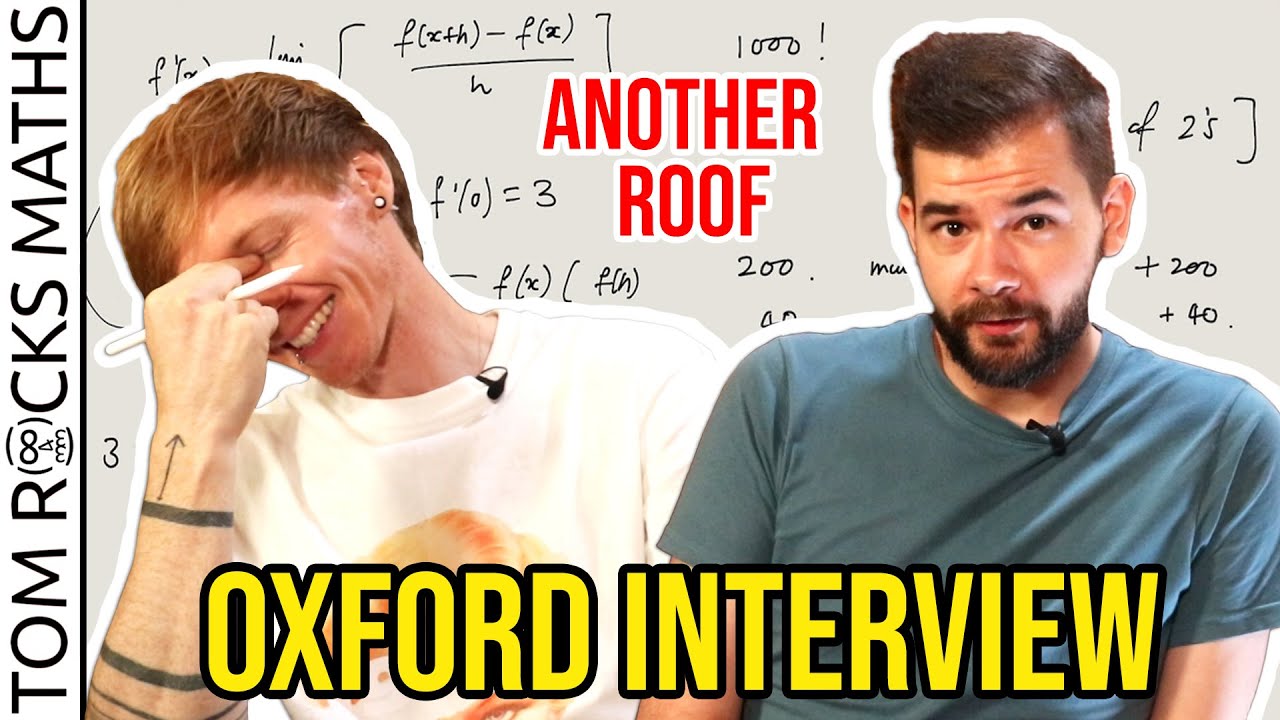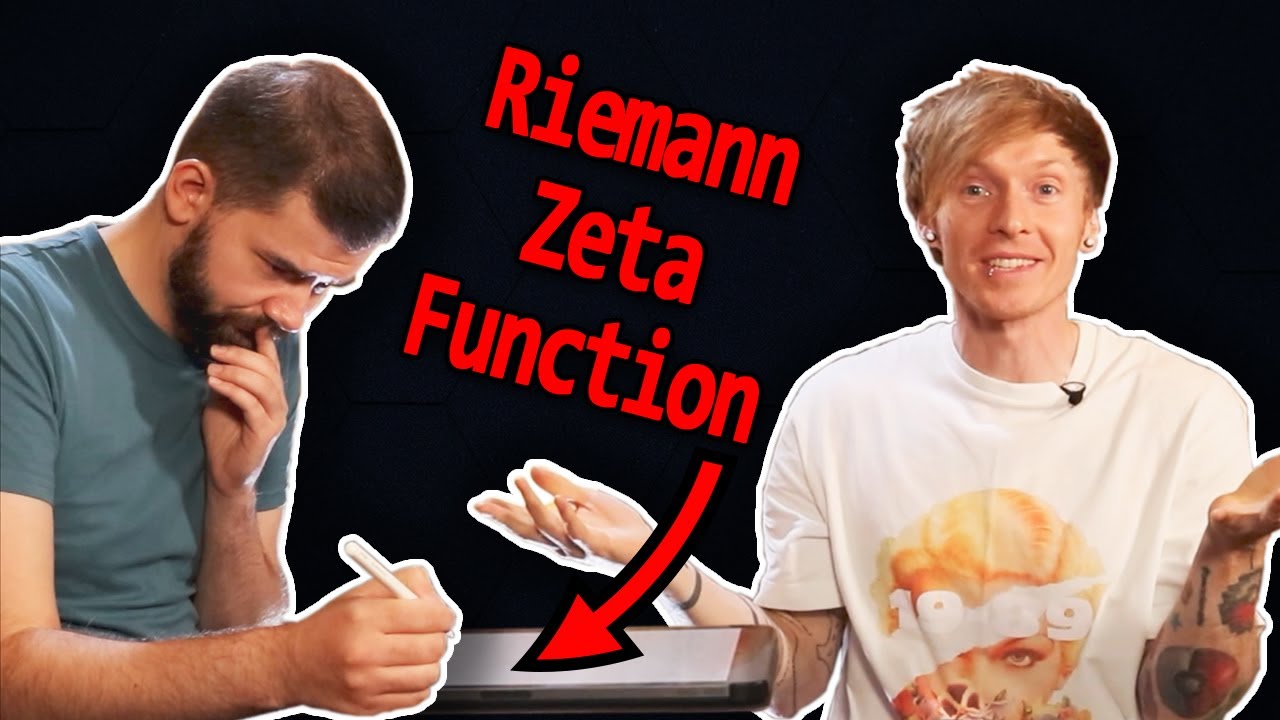Prime Reciprocal Series with @blackpenredpen (Oxford Maths Interview Question)
TLDRIn this engaging transcript, a dynamic conversation unfolds between two math enthusiasts, discussing a complex mathematical problem that resembles an old Oxford interview question. The dialogue begins with a reference to a previous discussion on Gabriel's Horn, a geometric figure with finite volume but infinite surface area. The conversation then dives into the evaluation of an infinite sum involving prime numbers, which is suspected to diverge. Utilizing the fundamental theorem of arithmetic, they decompose numbers into prime factors and manipulate the sum to show its divergence. The method involves comparing the sum to a series they know diverges, cleverly using the properties of exponential functions and prime numbers. The discussion is not only intellectually stimulating but also highlights the beauty of mathematical proofs. The participants agree that while the style of interview questions may have changed to be more inclusive, the historical questions offer a rich insight into mathematical problem-solving. The transcript ends with an invitation to explore more mathematical content and subscribe to their channels for further educational entertainment.
Takeaways
- 📚 The video is a continuation of a pretend Oxford interview discussing mathematical problems, specifically focusing on infinite sums involving prime numbers.
- 🧮 The first problem discussed was Gabriel's Horn, which has a finite volume but an infinite surface area, a mathematical paradox.
- 🎓 Steve, the interviewee, performed well on the first question and is enthusiastic about tackling the second, more challenging question.
- 🔢 The second problem involves evaluating the sum of the reciprocals of prime numbers, which is known to diverge to infinity.
- 📈 Steve correctly identifies that the sum of the reciprocals of the squares of natural numbers equals π²/6, a well-known result in mathematics.
- 🌐 Steve has a tattoo representing the geometric proof of the series for π²/6, indicating his passion for mathematics.
- 📊 The fundamental theorem of arithmetic is used to break down numbers into prime factors, which aids in showing that the sum of the reciprocals of prime numbers diverges.
- ➗ By considering the sum of 1/n² and relating it to the sum involving prime numbers, the video demonstrates a method to prove divergence.
- 📉 The comparison test is mentioned as a potential method to show that the sum of the reciprocals of prime numbers also diverges.
- 🧵 The video concludes that the sum of the reciprocals of prime numbers does indeed diverge to infinity, similar to the harmonic series.
- 🎉 Steve is commended for his performance throughout the interview, and the video encourages viewers to explore other methods of proof and to check out Steve's channel, Black Pen Red Pen.
Q & A
What is the topic of discussion in the video?
-The video discusses a challenging mathematical problem involving the sum of reciprocals of prime numbers, which is shown to diverge to infinity.
What is the paradox of Gabriel's Horn that was discussed in the first part of the interview?
-Gabriel's Horn is a geometric figure with a finite volume but an infinite surface area, which presents a paradox in the context of calculus and integration.
What is the fundamental theorem of arithmetic mentioned in the video?
-The fundamental theorem of arithmetic states that every integer greater than 1 can be represented as a unique product of prime numbers, up to the order of the factors.
What is the value of the sum of the reciprocals of the squares of the natural numbers?
-The sum of the reciprocals of the squares of the natural numbers converges to π²/6.
What is the geometric representation of the series π²/6 on Steve's arm?
-Steve has a tattoo on his arm that represents the geometric series π²/6, with the numbers 0, 1, 1/4, 1/9, and a dotted line representing π²/6.
How is the sum of the reciprocals of prime numbers shown to diverge to infinity?
-By using the fundamental theorem of arithmetic and considering the sum of the reciprocals of all natural numbers that can be expressed as a product of primes raised to the power of one and a square number, it is shown that the sum of the reciprocals of prime numbers must also diverge to infinity.
What is the comparison test used to show the divergence of the sum?
-The comparison test is used by comparing the sum of the reciprocals of prime numbers with the sum of the reciprocals of all natural numbers, which is known to diverge, thus proving the divergence of the former.
Why is the problem considered to be a very old and challenging interview question?
-The problem is considered old and challenging because it was sourced from an interview question archive from many years ago and requires a deep understanding of number theory and mathematical proofs.
What does the video suggest about the style of interview questions from the past compared to today?
-The video suggests that past interview questions may have been more challenging and tailored to students with extra training or work outside of school, whereas today's questions aim to be fair for everyone and are often beyond the school syllabus.
What is the advice given to viewers interested in alternative proofs of the problem discussed?
-The advice given is to look up other methods of proof, as there are several different ways to prove the divergence of the sum of the reciprocals of prime numbers.
What is the recommendation for viewers who enjoy mathematical content?
-The recommendation is to check out Steve's channel, Black Pen Red Pen, for more engaging mathematical content.
Outlines
😀 Introduction to the Mathematical Challenge
The video script begins with a lively introduction to a mathematical challenge, which is a follow-up to a previous discussion on Gabriel's Horn and its paradoxical properties of finite volume and infinite surface area. The host expresses enthusiasm for delving into a complex question from the archives of Oxford interview questions, which involves evaluating an infinite sum. The participant, Steve, is asked if he feels ready for the challenge, to which he responds affirmatively, noting a mix of excitement and nervousness.
🧮 Summation of Prime Numbers
The discussion shifts to evaluating the sum of the reciprocals of prime numbers, denoted as 1/p, where p ranges over all prime numbers. The host and Steve agree that this sum diverges, and they aim to demonstrate this using the fundamental theorem of arithmetic. They explore the idea of representing every integer as a product of prime factors raised to certain powers and simplify the expression to involve only primes raised to the first power, along with a term that is a square number. This leads to a comparison with the known convergent series of 1/n^2, which equals π^2/6, and they establish a relationship that will help them show the divergence of the sum of reciprocals of primes.
📚 Application of the Fundamental Theorem of Arithmetic
The conversation continues with an in-depth application of the fundamental theorem of arithmetic to break down integers into prime factors. They consider the parity of the powers to which the primes are raised and use this to express all integers as a product of primes to the first power and a square number. This leads to an expression involving an infinite product of exponentials, which they aim to show diverges as the number of primes considered goes to infinity. The host and Steve work through the mathematical reasoning, using the properties of the exponential function and power series to build towards their goal.
📉 Divergence of the Series
The host and Steve focus on demonstrating the divergence of the series as the number of primes, denoted by capital n, approaches infinity. They employ a comparison test, comparing their series to a known divergent series. They simplify the expression involving the exponential function and recognize a pattern that relates back to the fundamental theorem of arithmetic. By establishing an inequality that shows their series is greater than the sum of the reciprocals of natural numbers, which is known to diverge, they successfully argue that the sum of the reciprocals of primes also diverges.
🎓 Conclusion and Reflection on the Interview
The video concludes with a reflection on the difficulty and style of the mathematical problems discussed. The host suggests that while the questions from the past were challenging, they were sometimes tailored to students with additional training or extracurricular work. The host commends Steve for his performance throughout the interview, particularly on the difficult problem they just solved. They express hope that the viewers enjoyed watching the process of solving these complex problems and encourage viewers to check out Steve's channel, Black Pen Red Pen, for more mathematical content. The host also invites viewers to subscribe to his channel for more math-related videos and thanks everyone for watching.
Mindmap
Keywords
💡Gabriel's Horn
💡Infinite Sum
💡Prime Numbers
💡Fundamental Theorem of Arithmetic
💡Convergence Test
💡Exponential Function
💡Power Series
💡Comparison Test
💡Divergence
💡Oxford Interview
💡Number Theory
Highlights
The discussion explores the paradox of Gabriel's Horn, which has a finite volume but an infinite surface area.
Steve demonstrates a strong understanding of the concept of infinite series, particularly the sum of 1/n^2 which equals π^2/6.
Steve reveals his tattoo, a geometric representation of the series 1/n^2 = π^2/6, showing his passion for mathematics.
The interview delves into evaluating the sum of the reciprocals of prime numbers, a challenging problem from Oxford's archives.
The fundamental theorem of arithmetic is introduced as a method to tackle the problem of summing the reciprocals of prime numbers.
A unique approach to simplifying the problem involves considering the parity of numbers and the concept of prime factorization.
The sum of 1/p (where p is prime) is suspected to diverge, and the interviewees aim to prove this using a comparison test.
The use of the exponential function e^x and its properties is key in comparing the series to known divergent series.
The interviewees construct an inequality to show that the sum of 1/p is greater than a known divergent series, thus proving its divergence.
The problem's solution involves a deep understanding of number theory and the application of advanced mathematical concepts.
Steve successfully navigates through the complex proof, demonstrating his mathematical prowess.
The interview concludes with the confirmation that the sum of the reciprocals of prime numbers indeed diverges to infinity.
The conversation reflects on the difficulty and style of historical mathematics interview questions compared to modern ones.
Steve is commended for his performance in the interview, showcasing his ability to handle complex mathematical challenges.
The video encourages viewers to explore other methods of proof for the problem and to appreciate the beauty of mathematical problem-solving.
The host recommends checking out Steve's channel, Black Pen Red Pen, for more engaging mathematical content.
The video ends with an invitation for viewers to subscribe to the host's channel for more mathematical discussions and problems.
Transcripts
Browse More Related Video

Oxford Maths Admissions Interview Question with @blackpenredpen

Impossible Squares - Numberphile

Oxford University Mathematician takes Admissions Interview (with @AnotherRoof)

How Hard is an Oxford Maths Interview? Feat. Tom Rocks Maths

Series sum example | Sequences, series and induction | Precalculus | Khan Academy

An "unsolvable" logic puzzle
5.0 / 5 (0 votes)
Thanks for rating: